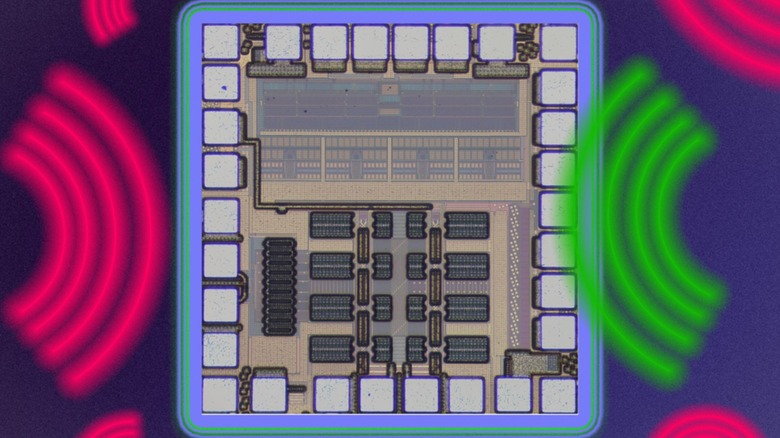This Tiny MIT Chip Could Be The Next Big Thing For 5G
The world of smart home electronics is pushing ahead at a breakneck pace, bringing new form factors to the table while solving critical problems at the same time. The biggest challenge, however, remains the power draw, especially for devices that rely on sustained networks and a battery pack of their own, instead of a wired connection. The folks over at MIT may have delivered a breakthrough by designing a tiny chip for 5G-ready smart devices that is roughly 30 times more efficient in terms of power consumption.
The next-gen chip relies on a low-power filtering system to suppress unwanted wireless signals from interfering with device operation when hooked to a 5G network. The team says this high-efficiency chip is ideal for environmental sensors, smart thermostats, home monitoring devices, indoor cameras, health monitors, industrial sensors, and even wearables like the Apple Watch SE (2nd generation). Another crucial benefit of the new receiver design is that a lot of target gadgets can now be fitted with smaller batteries, which allows for the gadgets to also be smaller.
Thanks to advancements introduced by 5G, devices can be configured to work with a wider bandwidth of networks, but it also gets challenging to tap into those benefits without tackling the interference problem. The team explains that the current generation of IoT devices relies on a narrow-band filter to reduce interference from other signals. The challenge was handled by using a system of capacitors connected to a network. The resulting receiver occupies an area of just 0.05 square millimeters.
The secret switch
At the center of the breakthrough is a novel switch-capacitor network that the researchers first demonstrated in 2023, where the capacitors were arranged in such a way that charge sharing continued while also blocking signal interference. The bigger challenge was landing at the right power supply requirement so that the chip could get the job done at 0.6 volts, but operating at such low voltage levels also means electronic switches are prone to power on/off errors.
They solved the voltage problem using a technique called bootstrap clocking, where the supplied voltage is just enough to keep the circuit working reliably, but it uses fewer components at a lower power draw. The team landed at a receiver architecture that sucks up less than one milliwatt of electrical power. According to one of the engineers behind the project, the small size of the chip also ensures that the "amount of signal that can leak out of the antenna is also very small."
The team is already at the prototype stage, so it's only a matter of time before the scalability aspect is tested and it enters the mainstream. However, the they harbor even bigger ambitions: they want completely end the need for an external power supply. Instead of relying on charged capacitors or a battery, the MIT group is hoping to devise a system that can harness Wi-Fi signals and Bluetooth waves to supply power to the receiver chip.

